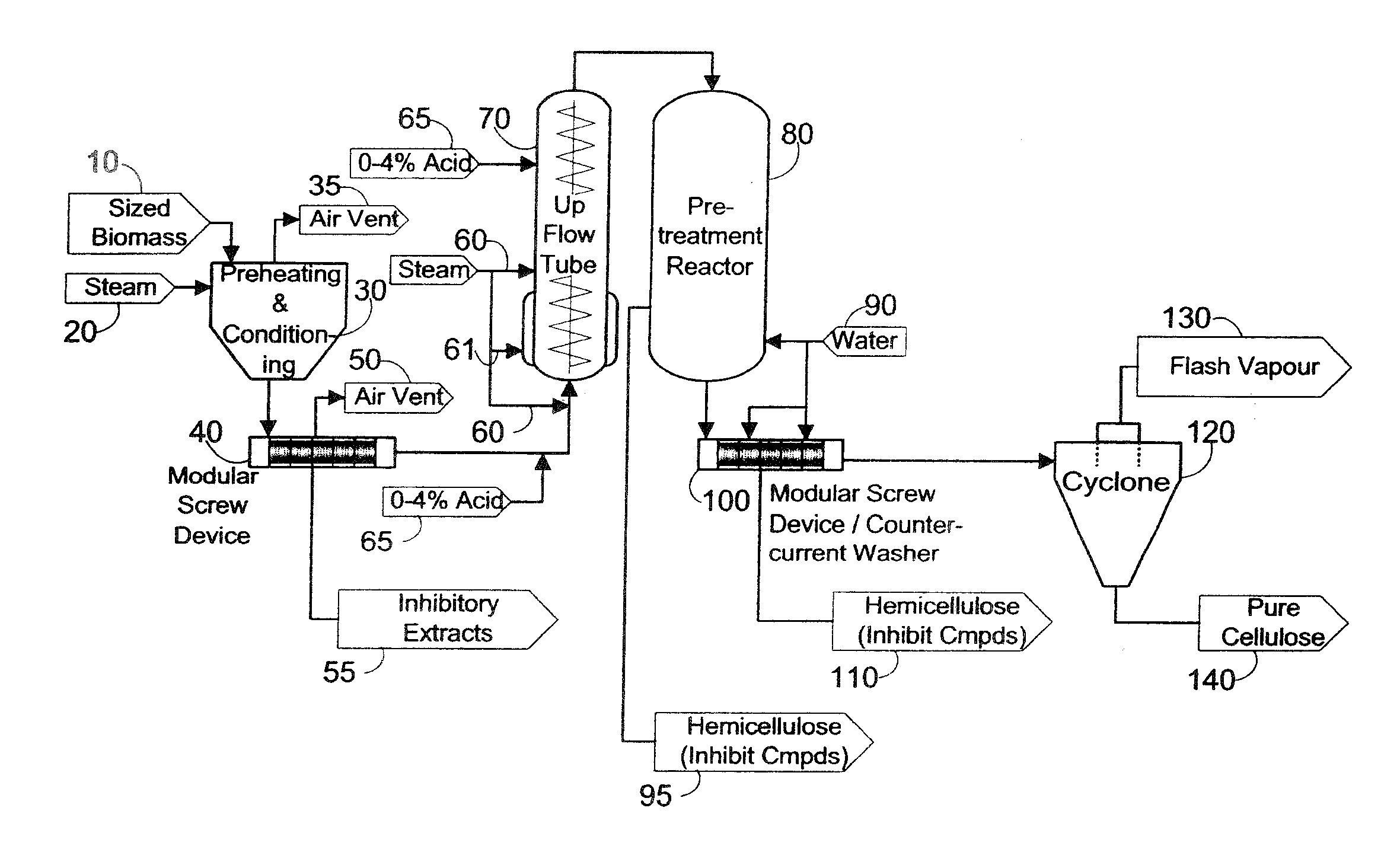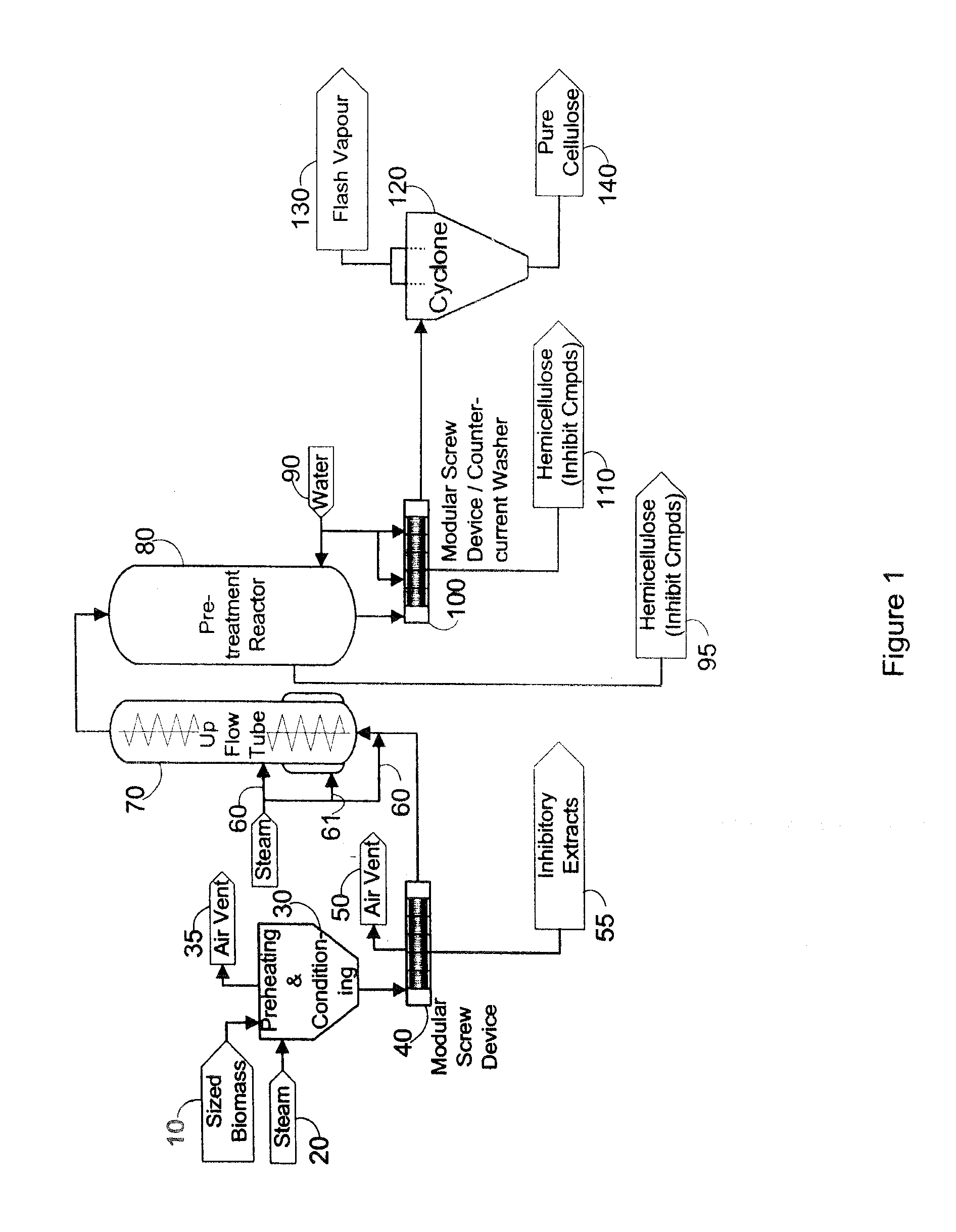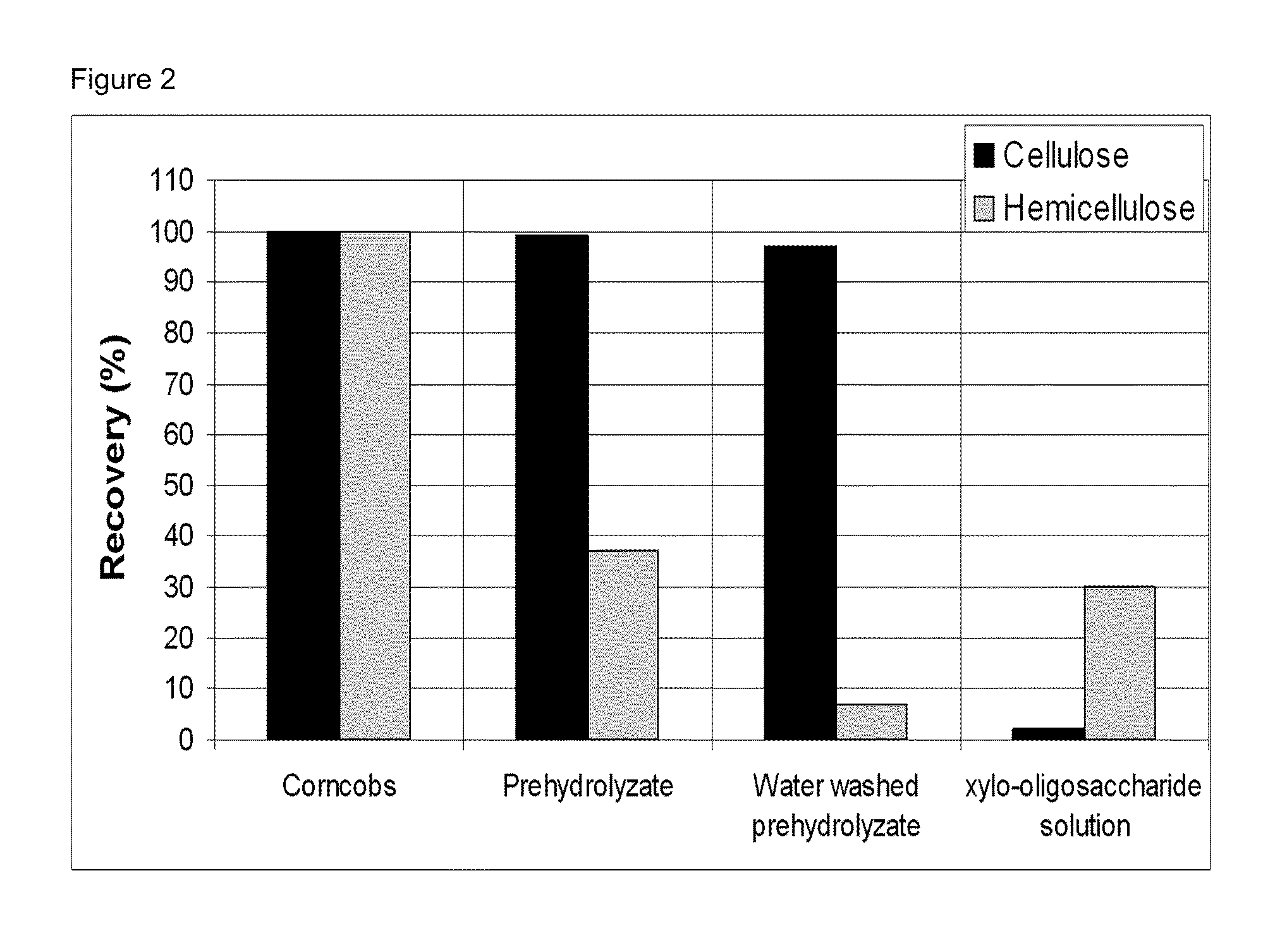Fractionation of biomass for cellulosic ethanol and chemical production
a cellulosic ethanol and biomass technology, applied in the field of cellulosic ethanol production, can solve the problems of increasing operating costs, negative affecting the enzymatic conversion of cellulose to glucose, and improving the overall, so as to reduce the inhibitory effect of enzymes, reduce extraction costs, and improve overall efficiency
- Summary
- Abstract
- Description
- Claims
- Application Information
AI Technical Summary
Benefits of technology
Problems solved by technology
Method used
Image
Examples
example 1
High Pressure Pretreatment of Corncobs
[0121]Steam explosion pretreatment of corncobs was carried out in a steam explosion pretreatment system pressurized with saturated steam at a temperature of 205° C. No acid was added to the corncobs during the heating step. The overall retention time of corncob pretreatment is 8 min e.g. 3 min in an up flow tube, 5 min in a pretreatment reactor at pH 3.8. Corncob acidification resulted from the release of acetic acid from hemicellulose breakdown.
[0122]Pretreated corncobs were water washed.
[0123]Cellulose extraction from corncobs was carried out at pilot scale with a percentage recovery of 92% (FIG. 7).
[0124]59% of the incoming hemicellulose was recovered after high pressure pretreatment of corncobs. 52% of incoming hemicellulose was collected into the xylo-oligosaccharides solution (FIG. 7). The resulting lignin free solution contained 89% sugars, including 66% of xylo-oligosaccharides (w / w) on a dry matter basis.
example 2
Low Pressure Pretreatment of Corncobs
[0125]Steam explosion pretreatment of corncobs was carried out in a steam explosion pretreatment system pressurized with saturated steam at a temperature of 170° C. No acid was added to the corncobs during the heating step. The overall retention time of corncobs pretreatment was 85 min e.g. 15 min in an up flow tube, 70 min in a pretreatment reactor at pH 3.8. Corncob acidification resulted from the release of acetic acid from hemicellulose breakdown.
[0126]Pretreated corncobs were water washed.
[0127]Cellulose extraction from corncobs was carried out at pilot scale with a percentage recovery of 92% (FIG. 8).
[0128]51% of incoming hemicellulose was recovered after low pressure pretreatment of corncobs. 43% of incoming hemicellulose was collected in the xylo-oligosaccharides solution (FIG. 8). The resulting lignin free solution contained 88% sugars, including 65% of xylo-oligosaccharides (w / w) on a dry matter basis.
[0129]After explosive decompression...
example 3
Low Pressure Pretreatment of Miscanthus
[0136]Steam explosion pretreatment of Miscanthus was carried out in a system pressurized with saturated steam at a temperature of 170° C. Miscanthus fibers were impregnated with sulfuric acid in the amount of 1.6% by weight DM during the heating step. The overall retention time of the Miscanthus pretreatment was 30 min at pH 3.8.
[0137]Pretreated Miscanthus was water washed.
[0138]Cellulose extraction from Miscanthus was carried out at pilot scale with a percentage recovery in the solid fraction of 95% (FIG. 10).
[0139]45% of the incoming hemicellulose was recovered after pretreatment of Miscanthus. 40% of the incoming hemicellulose was collected in the xylo-oligosaccharides solution (FIG. 10). The resulting lignin free solution contained 85% sugars, including 62% of xylo-oligosaccharides (w / w) on a dry matter basis.
[0140]Extracted cellulose from pilot scale pretreatment of Miscanthus was highly susceptible to enzymatic hydrolysis. 80% of the max...
PUM
| Property | Measurement | Unit |
|---|---|---|
| Temperature | aaaaa | aaaaa |
| Temperature | aaaaa | aaaaa |
| Temperature | aaaaa | aaaaa |
Abstract
Description
Claims
Application Information
 Login to View More
Login to View More - R&D
- Intellectual Property
- Life Sciences
- Materials
- Tech Scout
- Unparalleled Data Quality
- Higher Quality Content
- 60% Fewer Hallucinations
Browse by: Latest US Patents, China's latest patents, Technical Efficacy Thesaurus, Application Domain, Technology Topic, Popular Technical Reports.
© 2025 PatSnap. All rights reserved.Legal|Privacy policy|Modern Slavery Act Transparency Statement|Sitemap|About US| Contact US: help@patsnap.com



